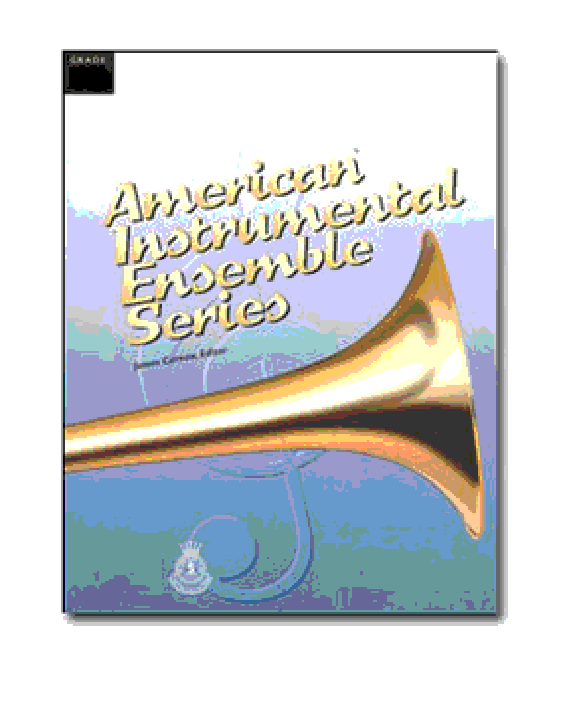| Instrument | |
|---|---|
| Level | 2 |
| Occasion | |
| Theme | 10,000 Reasons |
| Writer | |
| Publisher | |
| Copyright | 2016 |
| Comments | 10,000 Reasons |
10,000 Reasons
$24.95
Related products
-
Hallelujah! We Shall Rise
$12.00A standard brass quintet with optional baritone for a sextet. The introduction starts in the tuba and then adds more voices as you would expect- rising! The tune is now bantered about between the upper voices and then lower ones. Modulation! And the Q&A game continues. Another modulation and the tempo suddenly changes to a slower, expressive one with the French horn featured. As before the Q&A continues. Another modulation and an “a tempo” where the piece now in full ensemble starts lower and softer and continually adds activity and pitch raising until a vigorous conclusion.
-
Christ Arose
$12.00Scored for traditional brass quintet, an optional bartione part can be used to expand the piece to a sextet. After an opening upper brass fanfare, the lower parts present the theme in solemn fashion with further extended fanfares from the upper lines. The middle section reverses the stylistic assignments only to be given back to the opening styles. The with a powerful stacking of parts the piece concludes in a triumphant chord.
-
Old Time Religion
$12.00A traditional brass quintet with an optional baritone part which allows to be a sextet as well. The beginning is active establishing a happy beginning to the piece. Then all the parts are in straight harmonies and then become fragmented. A modulation takes place allowing the lower voices to carry the tune. Then a tuba sola solo commences with light upper parts decorating the lines, until the parts fragment. This concludes with a modulation with motivic statements. After a brief intermission the piece takes off again with the tune in the lower voices and the trumpets add a flurry descants. As the piece comes to a close more and more voices add to the mix until the pieces adds a solid, grand statement.
-
A New Name In Glory
$9.00A brass quintet with opt. Trumpet for horn and baritone TC. It begins with fanfare motifs of the tune and then breaks into the hymn adding more parts as it progresses. It continues with a Q&A type of dialog between the lower, then upper voices. The second setion in a different key is reminiscent of the opening only this time in the middle voices and again moves in a Q&A type of dialog. Again modulating to a new key the theme is bounced around with rhythmical interest only to finalize in strong chordal patterns and ending on a bold declamation.
-
Meeting In The Air
$12.00A traditional brass quintet with opt. trumpet for horn and extra baritone for use as a sextet. The piece takes off immediately with a thematic statement in the trombone, breaking in a duet with the horn. Additional entries keep massing in the lower voices until most of the ensemble is involved. All of a sudden, the upper brass, silently present the tune in block harmonies until the lower brass present a countermelody. Now! Everybody’s involved. Next, a dialog between the upper brass and middle brass takes place as it alternates back and forth. With a modulation in place the tempo goes slow, the tune is in the lower brass- expressive! All of a sudden from bottom to top motives are presented- in stacked chords…. This goes through different transformations until the piece elevates into an uplifting conclusion.
-
Like A River Glorious
$12.00This quintet (opt. Sextet) begins with extraneous motifs leading into the first statement of the theme in the low brass offset by answering material in the trumpets. The pieces continues in this question and answer texture passing motivic material around the parts. Then in a transition mimicking the beginning a modulation takes place where the theme is more expressive and becomes more aggressive leading up to a majestic coda where it ends on a thought-provoking conclusion.
-
I Will Sing Of The Mercies
$9.00A woodwind quintet with opt. parts for Alto Sax and Bass Clar. This piece presents itself with a sense of joy throughout with the introduction itself in a motivic manner setting the tone The piece passes through several modulations where the upper voices carry the melodic material while the lower voices support the ensemble with strength. The writing of this arrangement is well crafted to take advantage of the “woodwind quintet sounds.” It continues that way right up to the very end with a declamatory statement of “Mercy.”
-









